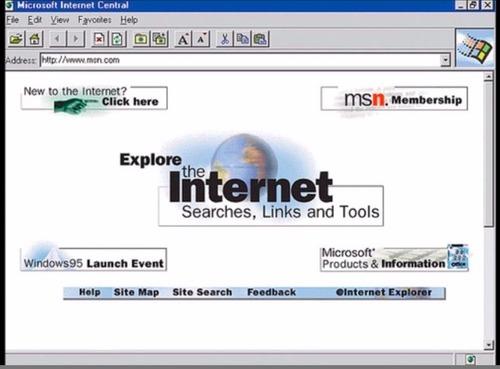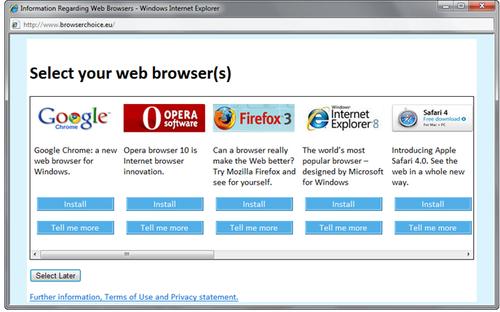Bowing to the inevitable, Microsoft admitted today that it had decided to remove IE from life support. (IE will, however, continue to receive tech support through at least 2016.) IE is survived by Windows, Office, and the Microsoft Mouse.

At
its height, Internet Explorer — known unaffectionately as IE —
dominated the Internet like no other software, accounting for 95 percent
of all website visits. In recent times, however, IE’s popularity waned,
thanks to the rise of powerful rivals and a long string of security
mishaps. But even at the time of IE’s death, one in four Web surfers
were using it as their browser of choice.
Microsoft marketing chief Chris Capossela says it was a heart-wrenching decision for all concerned.
“Many
of us here on the Redmond campus loved IE. Yes, he was a cad and a
scoundrel and a bit of a loose cannon, and the end got mighty ugly, but
he was one of me own kind,” Capossela said, inexplicably breaking into a
heavy Irish brogue.*
*This didn’t actually happen.
The early years
Internet
Explorer 1.0 started life as a rebranded version of Spyglass Mosaic,
itself based loosely on a browser developed by Marc Andreessen when he
worked at the National Center for Supercomputing Applications. It
emerged into the world on Aug. 16, 1995.
By
then, Andreessen already had his own commercial version of NCSA Mosaic,
called Netscape. Like brothers separated at birth, the two browsers
became intense rivals over the next four years. When Netscape introduced
JavaScript, Microsoft countered with Cascading Style Sheets. Both
companies continually upped the ante, creating the most intense
head-to-head competition ever seen in the technology world.
Then matters threatened to turn violent. Microsoft CEO Bill Gates’s vow to “crush” Netscape formed a key piece of evidence in the Department of Justice’s 1998 antitrust suit against
Microsoft. Fearing for its life, Netscape chose to enter the witness
protection program, becoming part of AOL in 1999. It has not been seen
since.
Rise and fall
For
years, IE’s domination of the browser market remained unchallenged, and
the pace of browser innovation ground to a halt. But IE’s meteoric rise
was matched by an equally precipitous fall.
In
2004, a new rival emerged: Firefox. Based on code created by the old
Netscape team, it was the first browser to pose a credible threat to IE.
Four years later, Google released Chrome, another nimble alternative
for Web surfers. Both free browsers slowly began to eat away at IE’s
market share.
Then the security scandals hit. In 2006, researchers identified hundreds of vulnerabilities that could allow rogue websites to steal information or take control of users’ computers. PC World magazine named IE 6 the eighth-worst product
of all time and “the least secure software on the planet.” In 2008, the
U.S. Computer Emergency Readiness Team (CERT) recommended turning off
the ActiveX controls inside IE because of security concerns. In August
2014, CERT told users to ditch IE entirely until it was patched.

There
were regulatory battles as well. To comply with a European Union
antitrust ruling, Microsoft was forced to release a version of Windows
without IE in June 2009. Those loading Windows 7 were able to choose from among a dozen browser alternatives. The browser ballot program concluded last December.
The final days
By
this time, IE had plummeted from a commanding lead to a distant second
or third place in the browser market, lagging well behind Chrome in nearly every survey. Even reports showing that IE 10 was actually more secure than its browser rivals could not forestall the inevitable.
If
not universally mourned, IE will be long remembered for its many
contributions to browser technology as well as for bringing Web surfing
to the masses.
In
lieu of flowers, Microsoft requests well-wishers to please support
Project Spartan, the new and allegedly much-improved browser set to
debut in Windows 10 later this year.

Post a Comment